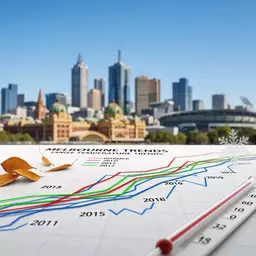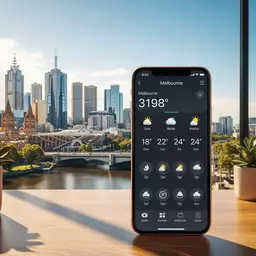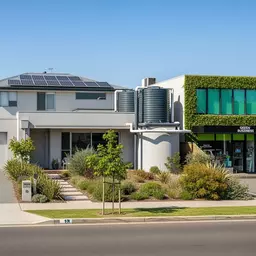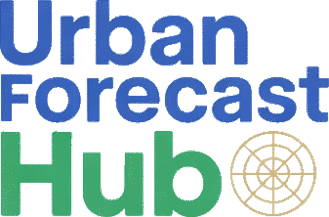Understanding Melbourne's Climate Initiatives
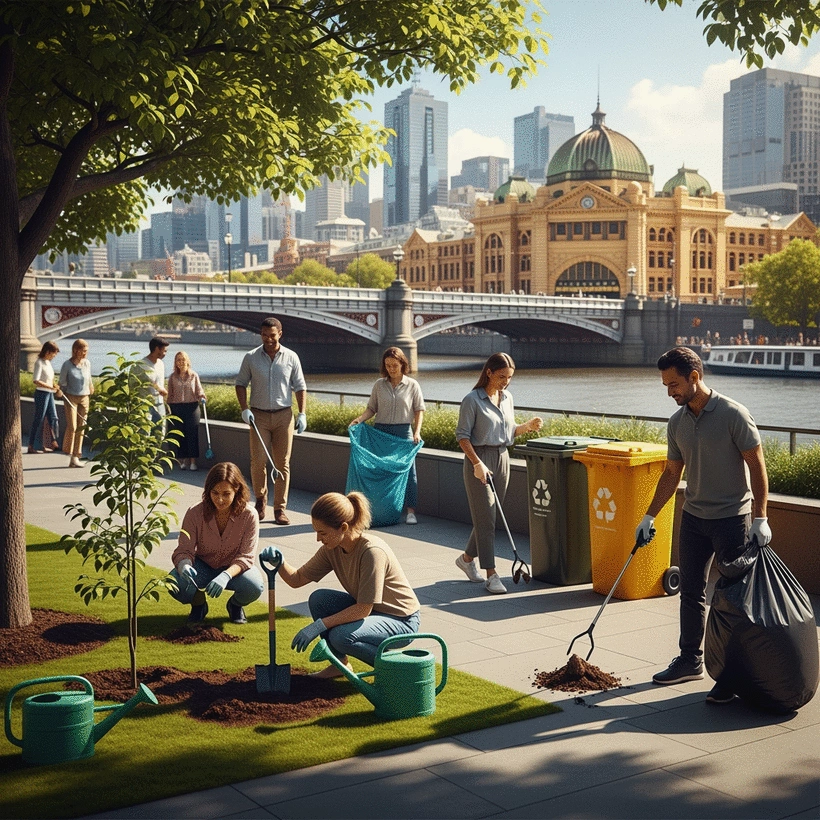
Have you ever considered the powerful impact that urban climate policies can have on your local community? Understanding how Melbourne is addressing climate change through its framework could inspire you to take part in the movement towards sustainability.
What You Will Learn
- Melbourne's Climate Change Act 2017 establishes a legal framework aimed at reducing greenhouse gas emissions by at least 28% below 2005 levels by 2025.
- The Melbourne Climate Action Plan translates the objectives of the Climate Change Act into actionable steps, including investments in renewable energy and promoting sustainable transportation options.
- The Urban Forest Strategy enhances green spaces within the city, improving air quality and increasing biodiversity, while also reducing the urban heat island effect.
- Active participation in local initiatives, such as joining environmental groups and advocating for sustainable practices, can significantly contribute to Melbourne's climate goals.
Melbourne's Climate Policy Framework Overview
Melbourne's comprehensive approach to climate change is structured around key initiatives and their primary objectives, reflecting a strong commitment to environmental sustainability.
Initiative:
Climate Change Act 2017
- Reduce GHG emissions by 28% by 2025 (below 2005 levels).
- Enhance adaptive capacity in vulnerable communities.
- Promote sustainable land and resource management.
Initiative:
Melbourne Climate Action Plan
- Investing in renewable energy projects.
- Encouraging energy efficiency in buildings.
- Promoting sustainable transportation options.
Initiative:
Urban Forest Strategy
- Improved air quality (oxygen production).
- Reduction of urban heat island effect.
- Increased biodiversity.
How to Contribute:
Local Participation & Resources
- Join local environmental groups.
- Utilize resources like Sustainability Victoria.
- Advocate sustainable practices at home/work.
Understanding Melbourne's Climate Policy Framework
As a Melbourne resident and a passionate advocate for accurate weather information, I am often asked about how our city is addressing climate change. It's fascinating to see how Melbourne's climate policy framework is evolving, incorporating various initiatives aimed at reducing our environmental impact. Understanding this framework is crucial for both residents and businesses as we navigate the challenges posed by climate change. For more insights into how climate change impacts our daily lives, you can also explore Melbourne's Climate Trends for 2025.
In this section, we'll explore the key components of Melbourne's climate strategy, including the Climate Change Act 2017, the Melbourne Climate Action Plan, and the Urban Forest Strategy. Each of these plays an integral role in shaping how we respond to our changing environment.
Overview of Climate Change Initiatives in Melbourne
Melbourne is proactive in tackling climate change, with a variety of initiatives designed to mitigate its effects. Some of the key initiatives include:
- The establishment of the Climate Change Act 2017, which provides a legal framework for reducing greenhouse gas emissions.
- The Melbourne Climate Action Plan, aimed at achieving significant emissions reductions in urban settings.
- The Urban Forest Strategy, which enhances green spaces and improves air quality.
These initiatives reflect our city's commitment to not only addressing current challenges but also preparing for future climate scenarios. By engaging with these policies, we can contribute to a sustainable environment.
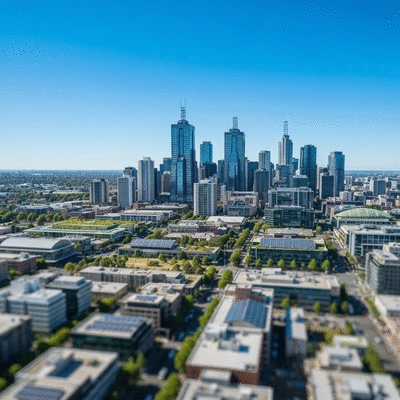
Key Objectives of the Climate Change Act 2017
The Climate Change Act 2017 serves as a cornerstone of Melbourne's response to climate change. It sets out clear objectives aimed at fostering a resilient community. The primary goals include:
- Reducing greenhouse gas emissions by at least 28% below 2005 levels by 2025.
- Enhancing adaptive capacity in vulnerable communities.
- Promoting sustainable land and resource management practices.
Understanding these objectives helps us recognize our collective responsibility in achieving them. As a community, we can work together to ensure that Melbourne not only meets these targets but exceeds them!
Role of the Melbourne Climate Action Plan in Policy Implementation
The Melbourne Climate Action Plan is essential for translating the objectives of the Climate Change Act into actionable steps. This comprehensive plan outlines a roadmap that includes:
- Investing in renewable energy projects.
- Encouraging energy efficiency in buildings.
- Promoting sustainable transportation options.
By aligning our local efforts with the broader goals of the Climate Change Act, the plan empowers residents and businesses alike to participate actively in climate mitigation strategies. It's vital for us to engage with these initiatives to ensure a sustainable future for all Melburnians. For more details on the city's broader response, consider reading about Melbourne's Climate Adaptation Strategies.
Overview of the Urban Forest Strategy and Its Impact
The Urban Forest Strategy is another key element of Melbourne’s climate policy framework. It aims to increase tree canopy cover across the city, which offers numerous environmental benefits. Some of the significant impacts include:
- Improved air quality through enhanced oxygen production.
- Reduction of the urban heat island effect, making our streets cooler.
- Increased biodiversity by providing habitats for various species.
As we incorporate more greenery into our urban landscape, we not only enhance our environment but also our quality of life. I encourage you to explore local parks and green spaces to appreciate how these strategies are being implemented in our community!
We Want to Hear From You!
What do you think about Melbourne's climate initiatives? Share your thoughts below:
Frequently Asked Questions About Melbourne's Climate Policies
Q: What is the main goal of Melbourne's Climate Change Act 2017?
A: The primary goal of the Climate Change Act 2017 is to reduce greenhouse gas emissions by at least 28% below 2005 levels by 2025 and enhance adaptive capacity in vulnerable communities.
Q: How does the Melbourne Climate Action Plan contribute to climate goals?
A: The Melbourne Climate Action Plan translates the legal framework of the Climate Change Act into actionable steps, including investments in renewable energy, promoting energy efficiency in buildings, and encouraging sustainable transportation.
Q: What are the benefits of the Urban Forest Strategy?
A: The Urban Forest Strategy aims to increase tree canopy cover, which improves air quality, reduces the urban heat island effect, and increases biodiversity within the city.
Q: How can residents contribute to Melbourne's climate goals?
A: Residents can contribute by joining local environmental groups, participating in community clean-up events, advocating for sustainable practices at work or school, and spreading awareness about climate policies.
Q: What resources are available for individuals interested in climate action?
A: Resources include Sustainability Victoria, which offers programs and materials for sustainable practices, local government climate networks for community programs, and online platforms like Climate Action Network Australia for ongoing initiatives.
Taking Action: How You Can Contribute to Melbourne's Climate Goals
As residents of Melbourne, we all share the responsibility of tackling climate change! By participating in local initiatives and grassroots movements, we can collectively make a significant impact on our environment. It's about working together to foster a healthier, more sustainable city for ourselves and future generations.
Engaging in community efforts is vital. Whether it's attending local meetings or joining neighborhood groups, every action counts! Here are a few ways you can get involved:
- Join local environmental groups to collaborate on initiatives.
- Participate in community clean-up events to protect our local parks and waterways.
- Advocate for sustainable practices at your workplace or school.
- Spread awareness about Melbourne's climate policies within your network.
By taking these steps, we can build a supportive community that prioritizes climate action and sustainability. It's not just a responsibility; it's an exciting opportunity to connect with like-minded individuals!
Encouraging Local Participation and Grassroots Movements
Grassroots movements are the backbone of community-led climate action. These initiatives empower individuals to come together and address issues that matter most to them. As someone deeply invested in understanding Melbourne's climate landscape, I can tell you that local participation can drive real change!
To effectively encourage grassroots movements, consider these strategies:
- Host informational sessions to educate residents about climate issues.
- Organize workshops that teach sustainable practices, like composting or urban gardening.
- Launch campaigns that inspire residents to take small, actionable steps towards sustainability.
These efforts not only increase awareness but also cultivate a sense of community ownership over our climate goals. When we work together, we become a formidable force for change!

Resources for Individuals and Community Groups
There are numerous resources available for those looking to engage in climate action. From educational materials to funding opportunities, these tools can help amplify your efforts. As the owner of Urban Forecast Hub, I'm committed to sharing valuable information that can assist you in your journey.
- Sustainability Victoria: Offers resources and programs for individuals and businesses to adopt sustainable practices.
- Local Government Climate Networks: Connect with your local council to find out about community programs and initiatives.
- Online Platforms: Websites like Climate Action Network Australia provide a wealth of information on ongoing initiatives and how to get involved.
Make use of these resources to enhance your understanding and impact. Together, we can forge a path toward a sustainable future!
Understanding the Role of Sustainability Victoria and Local Government Climate Networks
Sustainability Victoria plays an essential role in guiding and supporting Melbourne's climate objectives. Through partnerships with local governments, they help implement initiatives that align with our city's climate goals. This collaboration ensures that resources are effectively utilized to address local challenges.
Here’s how these networks can support your climate engagement:
- Access to funding for community projects aimed at sustainability.
- Training programs that equip individuals and groups with necessary skills.
- Networking opportunities that connect you with other passionate advocates.
By leveraging these networks, we can maximize our reach and efficacy in driving climate action in Melbourne. It’s all about working collaboratively, sharing resources, and building a robust community committed to sustainable practices! To learn more about environmental impacts on urban areas, consider exploring Melbourne's Urban Heat Island Explained.
Recap of Key Points
Here is a quick recap of the important points discussed in the article:
- Melbourne's Climate Change Act 2017 aims to reduce greenhouse gas emissions by at least 28% below 2005 levels by 2025.
- The Melbourne Climate Action Plan provides a roadmap for implementing sustainable practices, including renewable energy investments and promoting energy efficiency.
- The Urban Forest Strategy enhances green spaces, improving air quality and reducing the urban heat island effect.
- Community involvement is essential; residents can participate in local initiatives and grassroots movements to support climate goals.
- Resources from organizations like Sustainability Victoria can help individuals and groups engage effectively in climate action.
